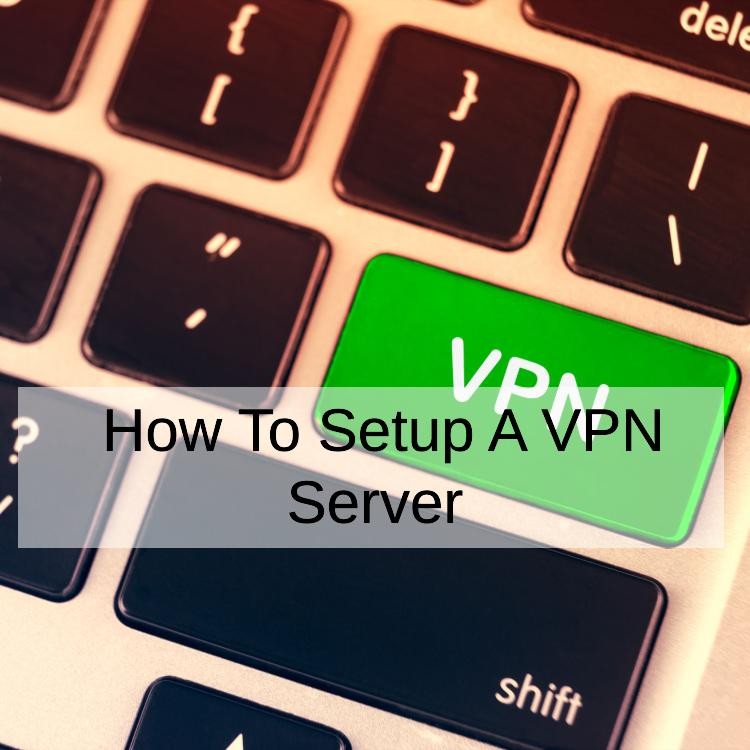Best VPN For Hong Kong in 2024
Discover the Best VPN for Hong Kong in 2024, offering enhanced security, privacy, and unrestricted internet access. Explore the best options from leading providers like ExpressVPN, NordVPN, CyberGhost VPN, and more.

Embark on a journey to secure your online presence with our step-by-step guide on how to set up a VPN server from the ground up. Whether you're concerned about privacy, data security, or simply want to access geo-restricted content, our comprehensive tutorial provides clear and detailed instructions for both beginners and tech enthusiasts alike.
In today's digital age, ensuring online privacy and security is paramount. Setting up your own VPN (Virtual Private Network) server can be a powerful solution to safeguard your internet connection. This guide will walk you through the process, providing a step-by-step approach to establish a secure and efficient protonvpn download server.
Table of contents [Show]
Before delving into the setup process, it's crucial to understand the various VPN protocols available. Popular options include OpenVPN, IPSec, and L2TP. Each protocol comes with its own set of advantages and considerations, so choosing the right one for your needs is an essential first step.
Score Big Savings Today at Nord VPN!
The choice of operating system plays a pivotal role in setting up a VPN server. Considerations such as compatibility with VPN server software and available features are crucial. Options like Windows Server and various Linux distributions are widely used for hosting VPN servers.
To start the setup process, gather the necessary resources. Obtain a static IP address, acquire a domain name for the server, and ensure that your hardware and network meet the requirements for hosting a openvpn connectserver.
There are several VPN server software options available, each with its unique features. OpenVPN, SoftEther, and WireGuard are popular choices. Evaluate the features and compatibility of each to determine the best fit for your setup.
Unbeatable Deals Await! Dive into Private VPN Now!
Once you've selected your VPN server software, follow a step-by-step installation guide. Configure the basic settings to initiate the setup process and ensure a smooth installation.
Security is paramount when setting up a openvpn downloadserver. Create user accounts for VPN access and implement secure authentication methods, such as username/password combinations or certificates, to control and monitor access.
Enhance the security of your VPN server by configuring firewall settings. Open the necessary ports for VPN traffic and establish firewall rules to prevent unauthorized access, adding an extra layer of protection to your server.
Encrypting data transmission is a fundamental aspect of VPN security. Configure encryption settings to ensure that the data exchanged between the server and connected devices remains secure. Choose appropriate encryption algorithms and key lengths based on your security requirements.
Configuring server-side protocols for communication is crucial for seamless connectivity. Ensure compatibility with client devices by setting up vpn for chrome browserconnection protocols that align with your chosen VPN software and client preferences.
Limited-Time Offers: Grab Your Pure VPN Deals Today!
Before deploying your VPN server, conduct thorough connectivity tests. Identify and troubleshoot common issues to ensure a stable and reliable connection. This testing phase is crucial for resolving potential problems before users connect to the server.
To further enhance security, consider implementing additional measures such as two-factor authentication. This extra layer of protection adds an additional barrier to unauthorized access and strengthens overall security.
Fine-tune your VPN server settings for optimal speed and efficiency. Regularly monitor server resources to identify and address potential bottlenecks, ensuring a smooth and responsive VPN experience for users.
Guide users in installing and configuring VPN client software on their devices. Provide step-by-step instructions to help them connect seamlessly to the free vpn protonserver, extending the security benefits to all connected devices.
Security is an ongoing concern, so it's crucial to regularly update your VPN server's software and security patches. Implement best practices for ongoing maintenance to keep your server operating efficiently and securely over time.
Setting up your own VPN server can be a rewarding endeavor, providing you with enhanced privacy and security in the online world. By following this comprehensive guide, you'll be well-equipped to establish a robust VPN server, ensuring a secure and private internet experience for yourself and those connected to your network. Remember to stay vigilant, keeping your server updated and implementing best practices to maintain a secure and reliable VPN environment.
In today's interconnected world, online security and privacy are paramount. One effective way to safeguard your internet connection is by setting up your own VPN (Virtual Private Network) server. This guide provides an in-depth exploration of the entire process – from choosing the best download open vpnto installation, configuration, and the myriad advantages of having your own VPN server.
Understanding VPNs: A VPN creates a secure tunnel for data transmission, encrypting it to prevent unauthorized access. Setting up a VPN server offers enhanced privacy and security, crucial in today's digital landscape.
Overview of Top VPN Services: Explore the current market leaders such as ExpressVPN, NordVPN, and CyberGhost. Assess their features, server locations, and user reviews to choose the one that aligns with your needs.
Selecting an OS: Choose an operating system compatible with your vpn on chrome browserserver software – options include Windows Server, Linux, and others. b. Choosing Server Software: Popular choices like OpenVPN, SoftEther, and WireGuard offer user-friendly interfaces, simplifying the installation process.
Basic Server Configuration: Follow a step-by-step guide to configure essential settings, including server location and connection protocols.
User Authentication: Create user accounts, implementing secure authentication methods such as username/passwords or certificates.
Automated Setups: Explore VPN services that provide one-click installations and configurations, ideal for users with limited technical expertise.
Pros and Cons: Assess the advantages and limitations of automatic configurations to make an informed decision.
In-Depth Configuration Steps: For those seeking a customized setup, delve into the manual configuration process. This includes detailed steps for server and client-side adjustments.
Security on Public Wi-Fi:ovpn downloadprotect your data on public networks, preventing potential security breaches.
Bypassing Geo-Restrictions: Access region-restricted content by masking your IP address with that of the VPN server.
Enhanced Security: Encryption ensures the confidentiality of data, making it practically impossible for third parties to intercept.
Anonymity: VPNs mask your IP address, providing anonymity and protecting your online identity.
Secure Remote Access: Facilitate secure connections to your home or office network from anywhere in the world.
Hosting Options: Choose between self-hosting and third-party hosting services. Understand the implications of each to make an informed decision.
Setting up your VPN server is a proactive step toward ensuring your online security and privacy. Whether you opt for an automated or manual configuration, understanding the process is crucial. Assess the advantages and benefits of having your own VPN server, and make an informed decision based on your specific needs. As the digital landscape evolves, having a reliable free vpn chromeserver becomes an indispensable tool for a secure online experience. Stay vigilant, stay private.
Check local laws and regulations regarding VPN use and server operation.
| Feature | OpenVPN | WireGuard | Proprietary Solutions |
|---|---|---|---|
| Software Type | Open-source | Open-source | Closed-source, proprietary |
| Cost | Free | Free, potentially additional costs for advanced features | Varies based on provider and features |
| Customization | Highly customizable | Minimal customization | Limited customization |
| Security | Strong, well-established | Newer, security research ongoing | Varies based on provider and implementation |
| Performance | Resource-intensive, depends on configuration | Lightweight, generally faster | Varies based on implementation |
| Ease of Use | Requires technical expertise for manual setup | Easier setup than OpenVPN, still technical knowledge preferred | Often user-friendly with preconfigured options |
Check local laws and regulations regarding VPN use and server operation.
| Feature | OpenVPN | WireGuard | Proprietary Solutions |
|---|---|---|---|
| Software Type | Open-source | Open-source | Closed-source, proprietary |
| Cost | Free | Free, potentially additional costs for advanced features | Varies based on provider and features |
| Customization | Highly customizable | Minimal customization | Limited customization |
| Security | Strong, well-established | Newer, security research ongoing | Varies based on provider and implementation |
| Performance | Resource-intensive, depends on configuration | Lightweight, generally faster | Varies based on implementation |
| Ease of Use | Requires technical expertise for manual setup | Easier setup than OpenVPN, still technical knowledge preferred | Often user-friendly with preconfigured options |
A VPN server creates a secure encrypted tunnel between your device and the server, protecting your online activity from snooping, data breaches, and geographical restrictions. Benefits include:
There are several methods, each with its pros and cons:
Alice indignantly, and she went on, 'and most of 'em do.' 'I don't think they play at all like the.
Discover the Best VPN for Hong Kong in 2024, offering enhanced security, privacy, and unrestricted internet access. Explore the best options from leading providers like ExpressVPN, NordVPN, CyberGhost VPN, and more.
Discover the top 5 Best VPN for Iceland in 2024, ensuring fast, secure, and private internet access. Explore the best VPN options for Iceland, handpicked for streaming, speed, and privacy, to enhance your online experience. From ExpressVPN to NordVPN, find the ideal VPN tailored for Icelandic users.
Looking for the best VPN for Florida in 2024? Explore our comprehensive analysis of the top VPN services, including ExpressVPN, NordVPN, and more, offering privacy, streaming, and speed features tailored to your needs.
